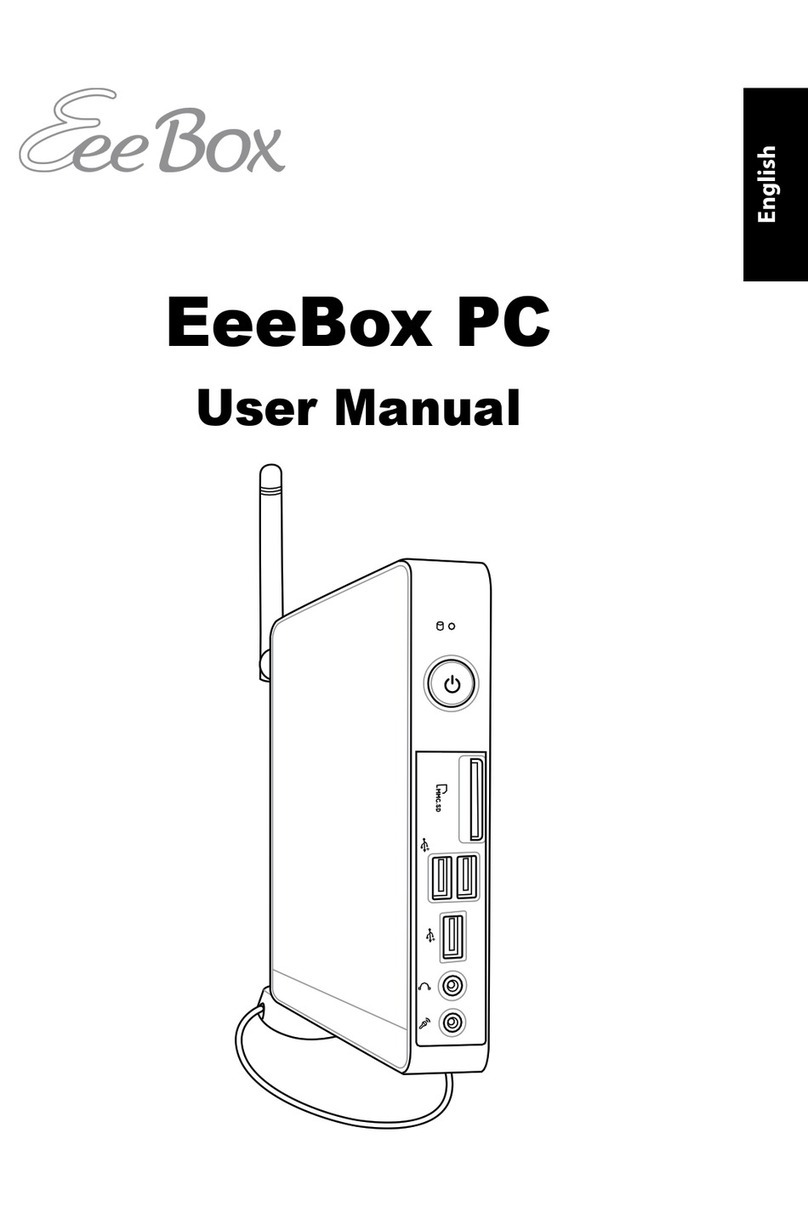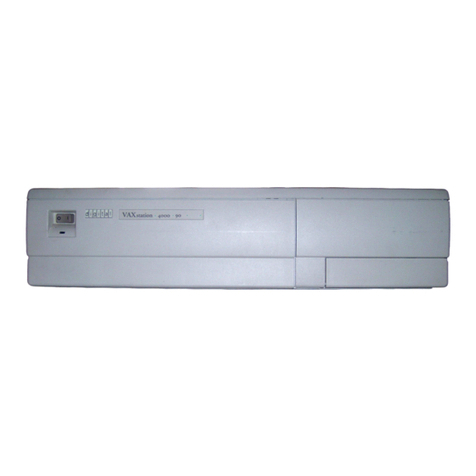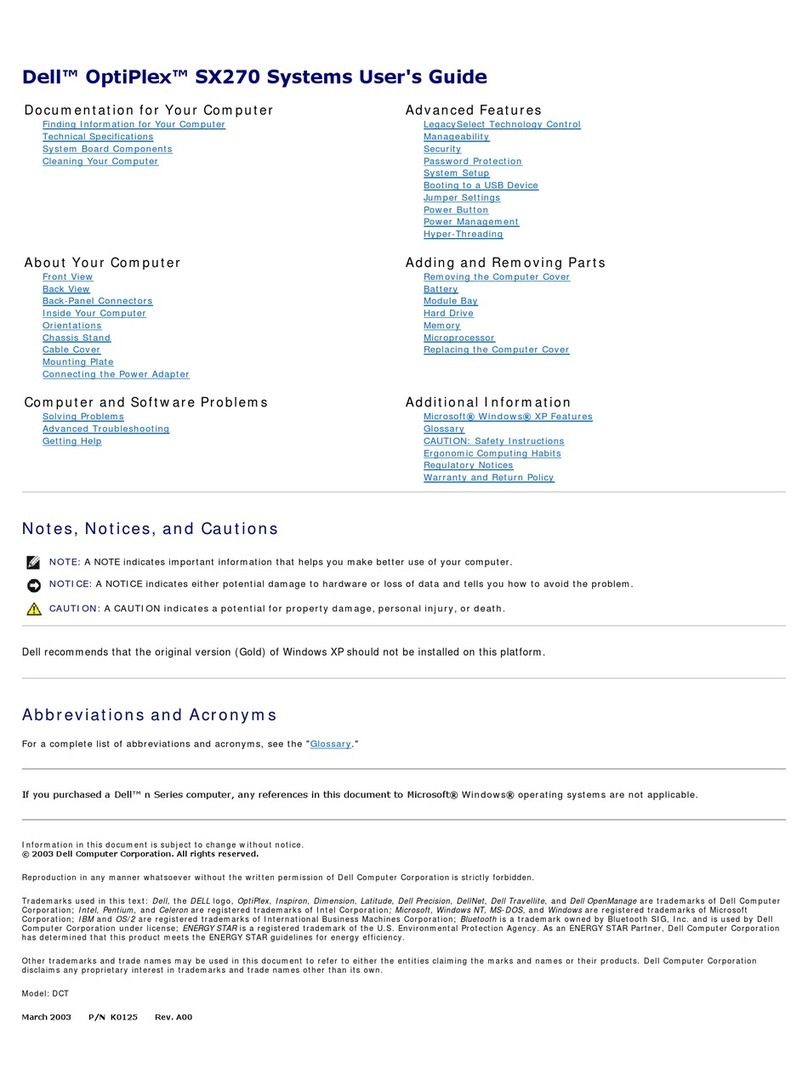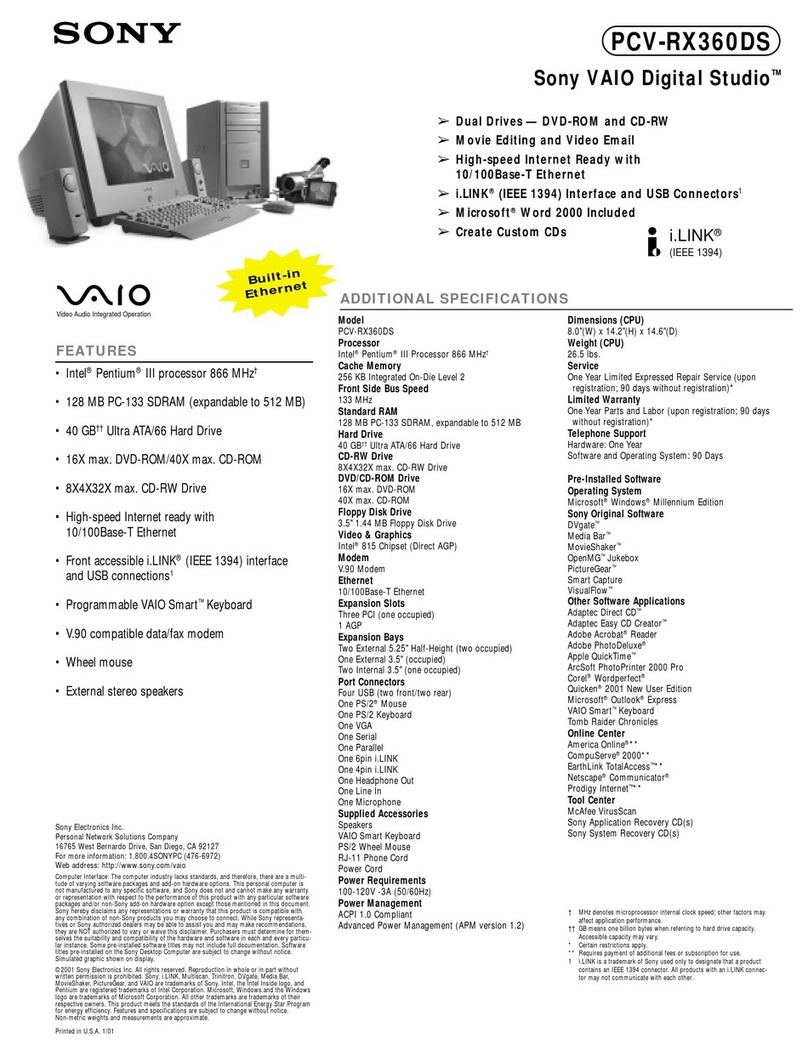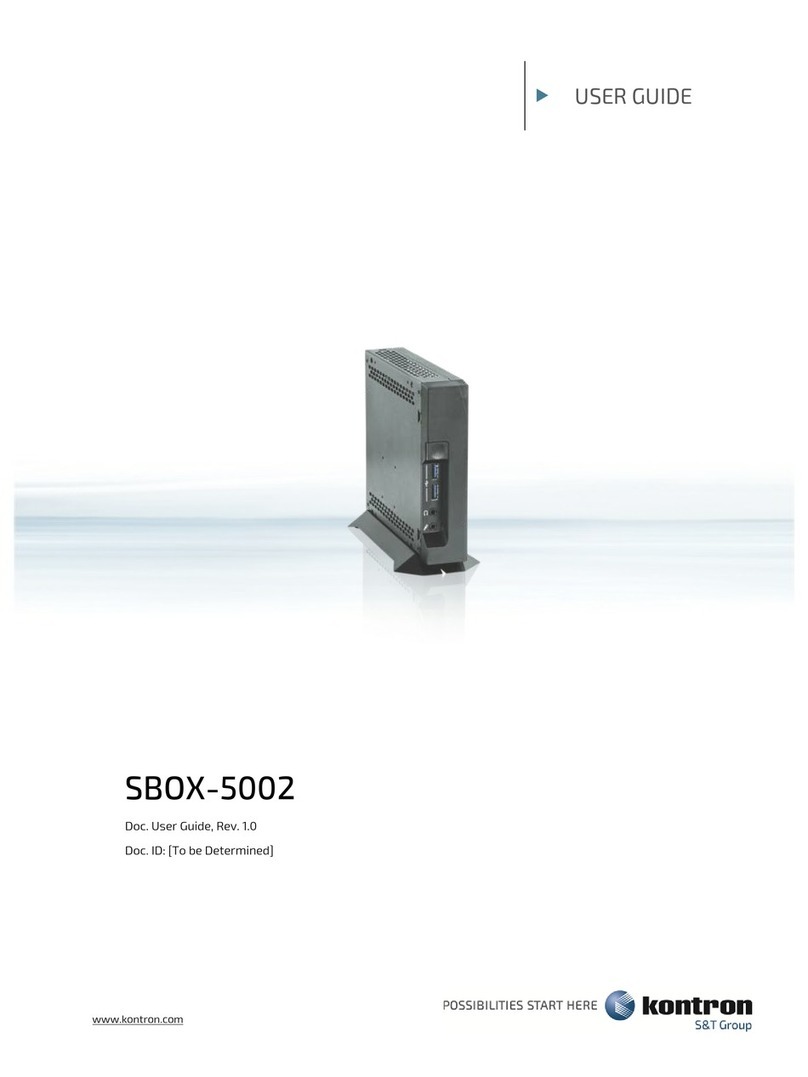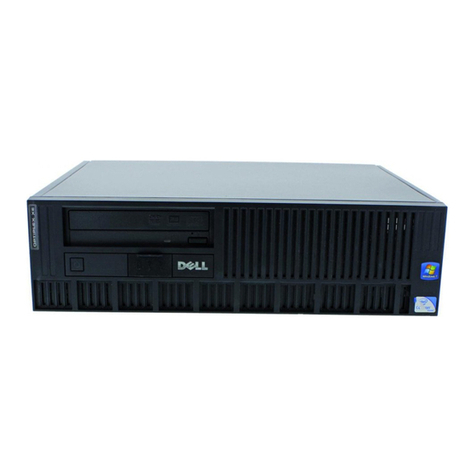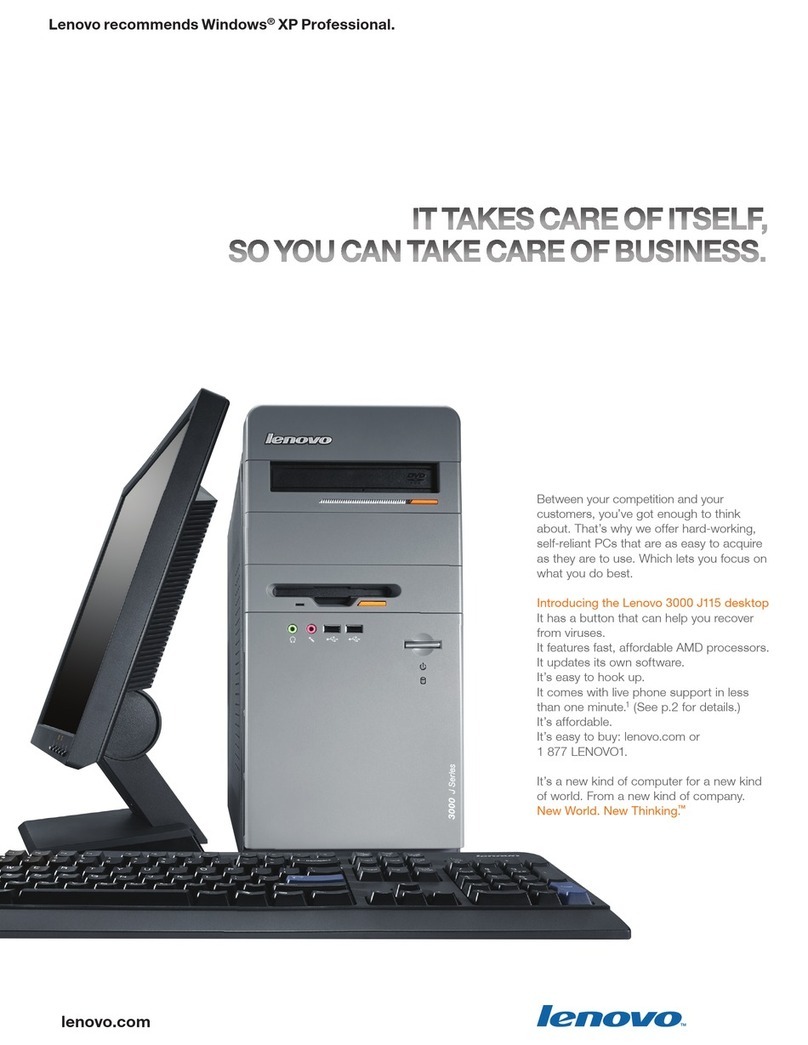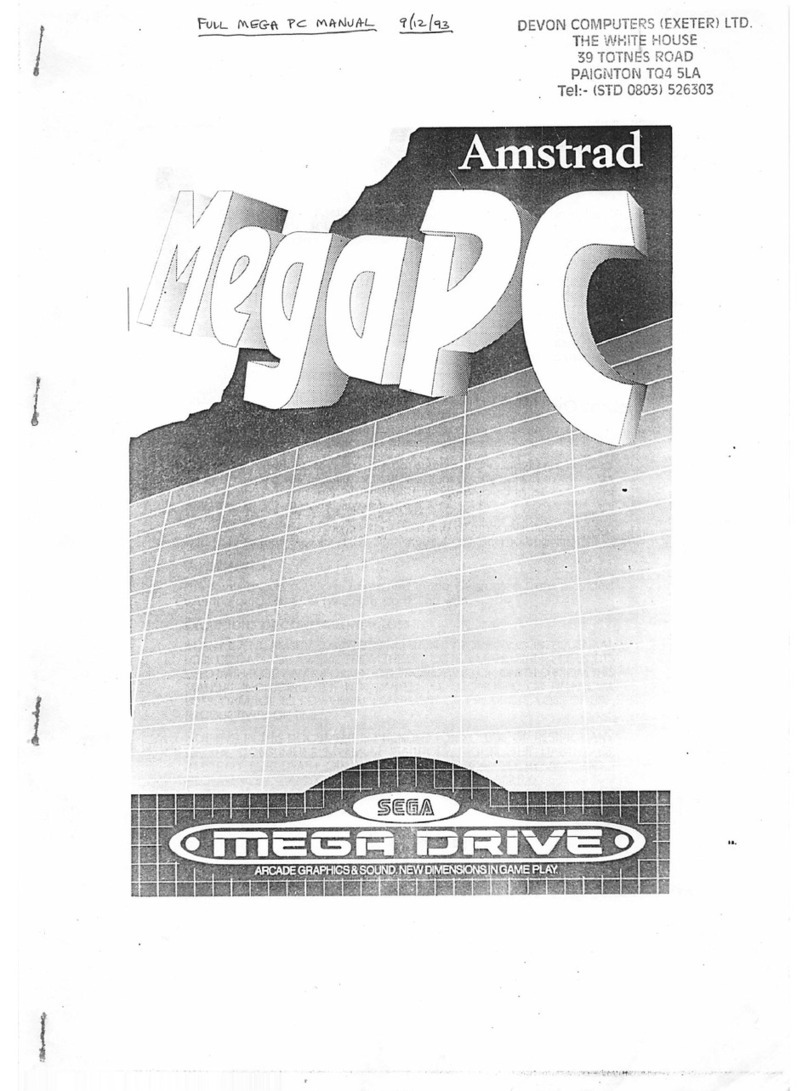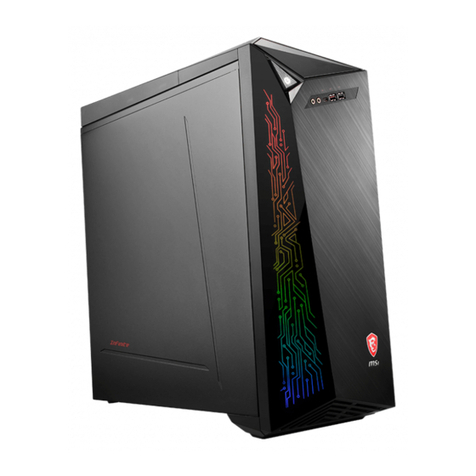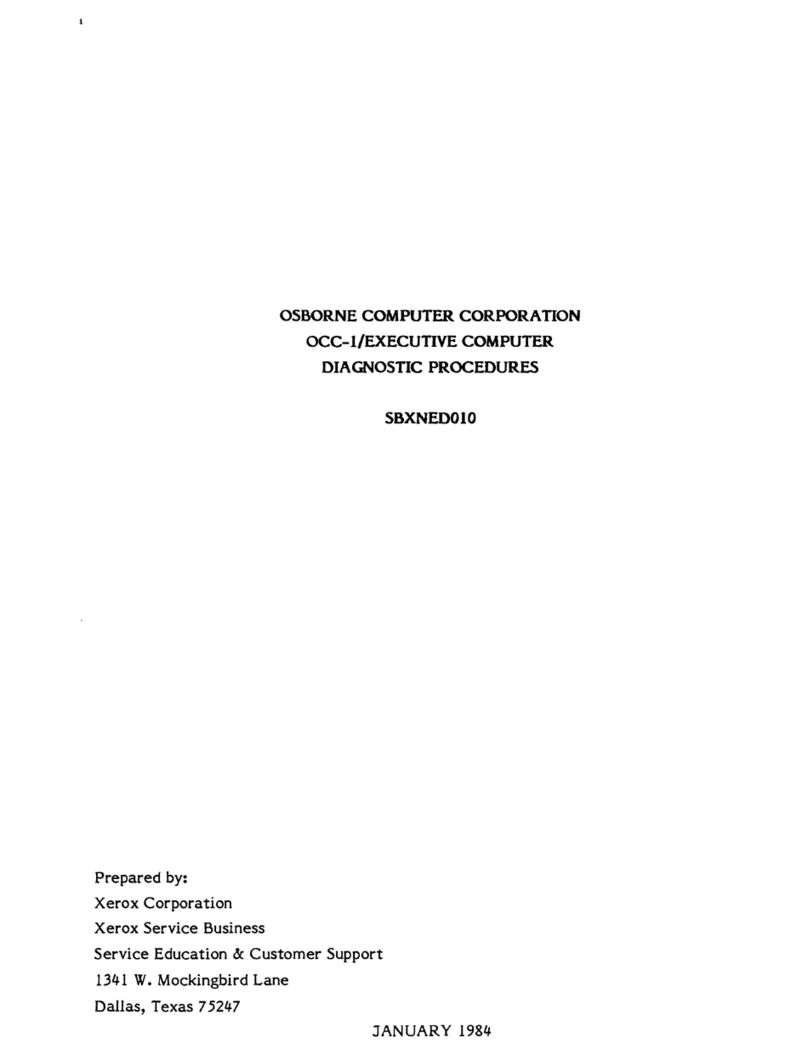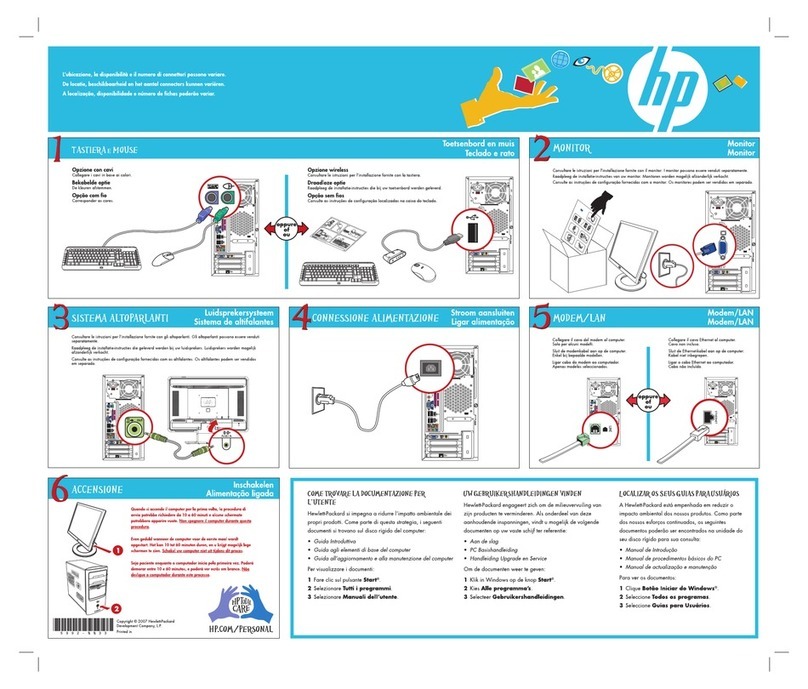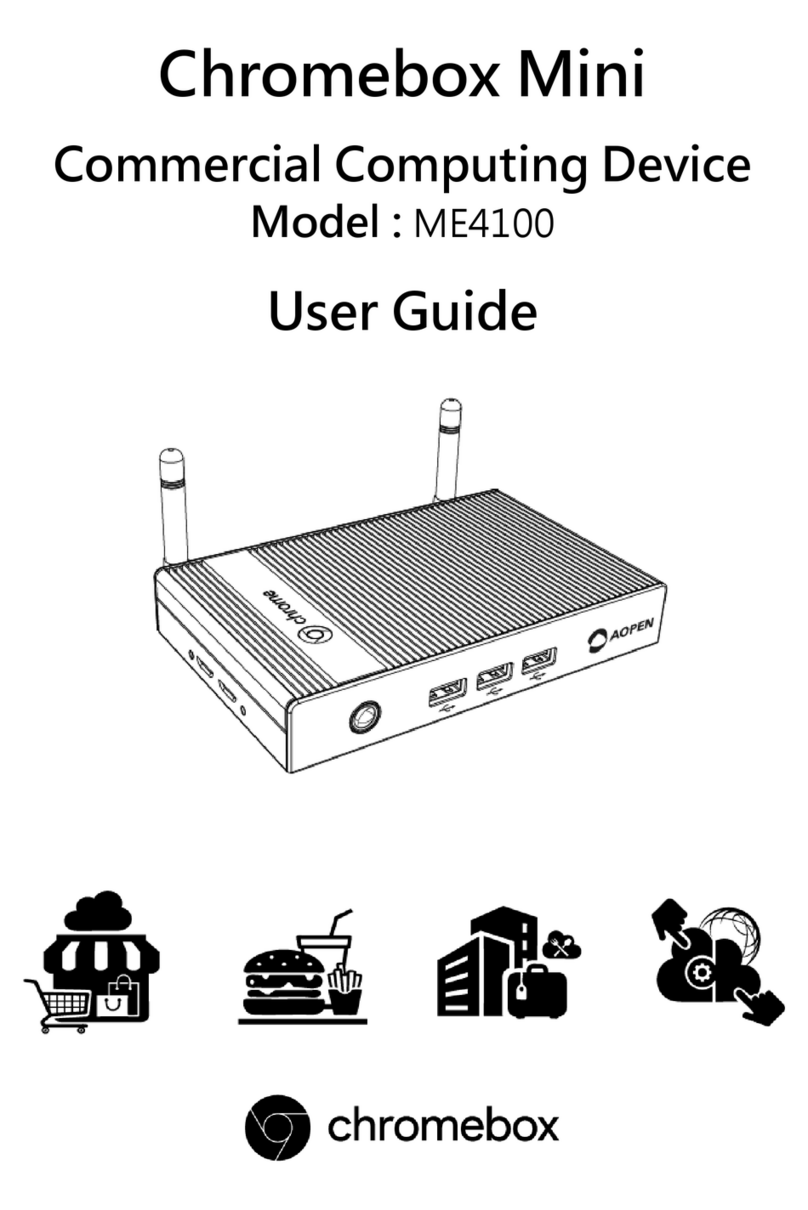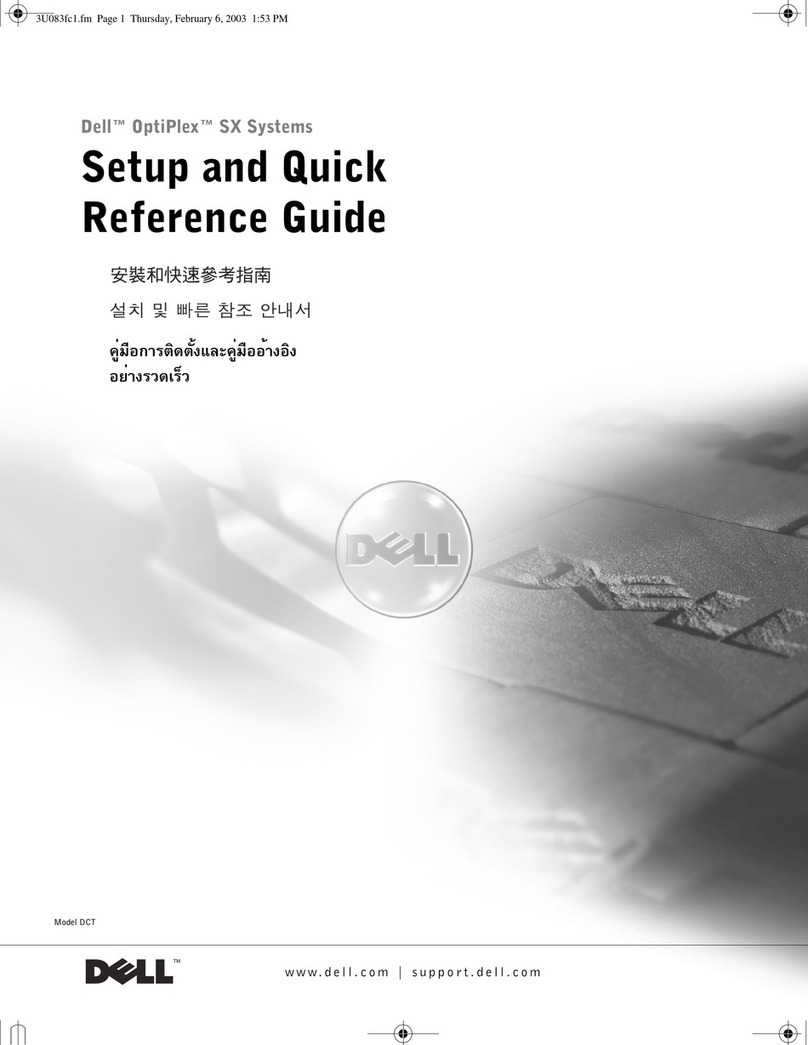Embedded Computer EPC-5500 Pentium M User manual

USER’S
MANUAL
EPC-5500
Intel®Pentium®M
EmbeddedPC
EPC-5500 M1

Copyright Notice
EPC-5500 Pentium® M
Embedded PC
OPERATION MANUAL
COPYRIGHT NOTICE
This operation manual is meant to assist both Embedded Computer
manufacturers and end users in installing and setting up the system. The
information contained in this document is subject to change without any
notice.
This manual is copyrighted in February, 2007. You may not reproduce or
transmit in any form or by any means, electronic, or mechanical, including
photocopying and recording.
ACKNOWLEDGEMENTS
All trademarks and registered trademarks mentioned herein are the
property of their respective owners.
CE NOTICE
This is a class A product. In a domestic environment this product may
cause radio interference in which case the user may be required to take
adequate measures.

Copyright Notice
FCC NOTICE
This equipment has been tested and found to comply with the limits for a
Class A digital device, pursuant to part 15 of the FCC Rules. These limits
are designed to provide reasonable protection against harmful
interference when the equipment is operated in a commercial
environment. This equipment generates, uses, and can radiate radio
frequency energy and, if not installed and used in accordance with the
instruction manual, may cause harmful interference to radio
communications. Operation of this equipment in a residential area is
likely to cause harmful interference in which case the user will be
required to correct the interference at his own expense.
You are cautioned that any change or modifications to the equipment not
expressly approve by the party responsible for compliance could void
your authority to operate such equipment.

Contents
TABLE OF CONTENTS
CHAPTER 1 INTRODUCTION
1-1 About This Manual ........................................................ 1-2
1-2 Case Illustration ……………………………………….. 1-3
1-3 System Specification ...................................................... 1-4
1-4 Safety Precautions ......................................................... 1-6
CHAPTER 2 HARDWARE CONFIGURATION
2-1 Jumper & Connector Quick Reference Table ................ 2-2
2-2 Component Locations .................................................... 2-3
2-3 How to Set the Jumpers ................................................. 2-4
2-4 COM Port Connector ……..…………………………... 2-6
2-5 COM3/4 RI& Voltage Selection ................……............ 2-8
2-6 RS232/422/485(COM2) Selection ................................ 2-9
2-7 Keyboard Connector ...................………………..….... 2-10
2-8 PS/2 Mouse Connector .....................……………..….. 2-10
2-9 Reset Connector ............................................................ 2-10
2-10 Hard Disk Drive LED Connector .................................. 2-11
2-11 ATX Power Button ….................................................... 2-11
2-12 External Speaker Connector .......................................... 2-11
2-13 Power LED Connector ……............................................ 2-12
2-14 KeyLock Connector ..………………………………… 2-12
2-15 EXTSMI Connector ………………………………….. 2-12
2-16 CPU Fan Connector ………………………………….. 2-13
2-17 System Fan Connector ………………………………… 2-13
2-18 VGA CRT Connector ………………………………… 2-14
2-19 Hard Disk Drive Connector ........................................... 2-15
2-20 Printer Connector .......................................................... 2-17
2-21 Universal Serial Bus Connector ……………………… 2-18
2-22 LAN Connector ………………………………………. 2-19
2-23 GigaLAN (LAN2) Enable/Disable Selection ………… 2-20
2-24 Clear CMOS Data Selection ………………………… 2-20
2-25 AT/ATX Power Selection ……………………………. 2-21
2-26 ATX Power Connector ……………………………….. 2-22
2-27 Reset/NMI Watchdog Selection ………………………. 2-23

Contents
2-28 DVO Connector ……………………………………….. 2-24
2-29 Sound Connector ………………………………………. 2-25
2-30 CD-IN Connector ……………………………………… 2-25
CHAPTER 3 SOFTWARE UTILITIES
3-1 Introduction …………..........................................…....... 3-2
3-2 VGA Driver Utility ……………………………….…… 3-2
3-3 Flash BIOS Update ..............................................…....... 3-4
3-4 LAN Driver Utility …...........................................…...... 3-6
3-5 Sound Driver Utility …………………………………… 3-7
3-6 Intel Chipset Software Installation Utility …..……..….. 3-8
3-7 USB2.0 Software Installation Utility ………………….. 3-9
3-8 Watchdog Timer Configuration ……………………….. 3-10
CHAPTER 4 AWARD BIOS SETUP
4-1 Introduction ................................................................... 4-2
4-2 Entering Setup ............................................................... 4-3
4-3 The Standard CMOS Features ………............................ 4-4
4-4 The Advanced BIOS Features ....................................... 4-8
4-5 Advanced Chipset Features ........................................... 4-11
4-6 Integrated Peripherals …............................................... 4-14
4-7 Power Management Setup ............................................. 4-19
4-8 PNP/PCI Configuration …............................................. 4-22
4-9 PC Health Status …….................................................... 4-24
4-10 Frequency Control ....................................…………...... 4-25
4-11 Load Fail-Safe Defaults ................................................. 4-26
4-12 Load Optimized Defaults .........................................…. 4-26
4-13 Password Setting ……………………………………… 4-27
4-14 Save & Exit Setup ......................................................... 4-28
4-15 Exit Without Saving ………………………………… 4-29

Contents
APPENDIX A SYSTEM ASSEMBLY
Exploded Diagram for Whole System ....................................... A-2
Exploded Diagram for System Power .............………............. A-3
Exploded Diagram for Front System …………………………. A-5
Exploded Diagram for Motherboard …………………………. A-7
Exploded Diagram for Hard Disk Drive ……………………… A-8
APPENDIX B TECHNICAL SUMMARY
Block Diagram ........................................................................... B-2
Interrupt Map ............................................................................ B-3
RTC & CMOS RAM Map ........................................................ B-4
Timer & DMA Channels Map .................................................. B-5
I/O & Memory Map ...............................................…................ B-6

Page:1-1
INTRODUCTION
This chapter gives you the information for EPC-5500. It also
outlines the System specification.
Section includes:
zAbout This Manual
zSystem Specifications
zSafety precautions
Experienced users can skip to chapter 2 on page 2-1
for Quick Start.
CHAPTER
1

Chapter 1 Introduction
Page: 1-2 EPC-5500 USER
′
S MANUAL
1-1. ABOUT THIS MANUAL
Thank you for purchasing our EPC-5500 Pentium M Embedded PC, which is
fully PC / AT compatible. EPC-5500 provides faster processing speed, greater
expandability and can handle more task than before. This manual is designed
to assist you how to install and set up the system. It contains four chapters.
The user can apply this manual for configuration according to the following
chapters :
Chapter 1 Introduction
This chapter introduces you to the background of this manual, and the
specification for this system. Final part of this chapter will indicate you how
to avoid damaging this Embedded Card.
Chapter 2 Hardware Configuration
This chapter outlines the component location and their functions. In the end of
this chapter, you will learn how to set jumper and how to configure this card
to meet your own needs.
Chapter 3 Software Utilities
This chapter contains helpful information for proper installations of the VGA
utility, LAN utility, sound utility, and BIOS update. It also describes the
Watchdog timer configuration.
Chapter 4 Award BIOS Setup
This chapter indicates you how to set up the BIOS configurations.
Appendix A System Assembly
This Appendix introduces you the exploded diagram of the system.
Appendix B Technical Summary
This section gives you the information about the Technical maps.

Chapter 1 Introduction
EPC-5500 USER
′
S MANUAL Page: 1-3
1-2. CASE ILLUSTRATION

Chapter 1 Introduction
Page: 1-4 EPC-5500 USER
′
S MANUAL
1-3. SYSTEM SPECIFICATION
zCPU (mPGA 478) :
Intel® Pentium® M processor in mPGA478 socket
Available at 1.3~ 2.0GHz
System bus frequency at 400MHz
Auto detect voltage regulator
zSYSTEM CHIPSET :
Intel® 855GME chipset
zMEMORY :
Supports up to 2 GB DDR SDRAM.
Two 184-pin DDR333 DIMM sockets on board
zCACHE :
Built-in CPU
zREAL-TIME CLOCK / CALENDAR :
256-byte battery backed CMOS RAM.
Hardware implementation to indicate century rollover
zBIOS :
Phoenix-AwardBIOS™ for plug & play function
Memory size with 4 MB, with VGA BIOS
zKEYBOARD/MOUSE CONNECTOR :
Keyboard with 1 x 4 pin wafer connector.
PS/2 mouse connector with 1 x 4 pin wafer connector.
zUNIVERSAL SERIAL BUS :
Universal Serial Bus Connector on board
Supports up to four USB 2.0 ports.

Chapter 1 Introduction
EPC-5500 USER
′
S MANUAL Page: 1-5
zDISPLAY :
Built in Intel 855GME, support CRT, LCD.
zIDE INTERFACE :
Two IDE ports support up to four IDE devices.
Supports UDMA 33/66/100.
zLAN INTERFACE :
Dual ports.
LAN 1: Intel® 82562EM 10/100 Mbps Ethernet.
LAN 2: Intel® 82541PI 10/100/1000 Mbps Ethernet.
Supports Wake-on-LAN with ATX power.
zSOUND:
AC '97 Codec. Reatel ALC202A.
Fully Compliant AC '97 Analog I/O Component
zSERIAL PORT :
Four high speed 16550 Compatible UARTs with Send / Receive 16 Byte
FIFOs. COM1/3/4 for RS232; COM2 for RS232/422/485.
zPARALLEL PORT :
One port supports SPP / ECP / EPP Function.
zHARDWARE MONITORING FUNCTION :
Monitor Voltage, CPU Temperature and Cooling Fan.
zLED INDICATOR :
HDD LED, Power LED.
zDMA CONTROLLER :
82C37 x 2
zDMA CHANNELS :
7
zINTERRUPT CONTROLLERS :
82C59 x 2
zINTERRUPT LEVELS :
15

Chapter 1 Introduction
Page: 1-6 EPC-5500 USER
′
S MANUAL
zOPERATING TEMPERATURE :
0 to 40°C (32°F to 104°F)
zINPUT POWER REQUIREMENT :
180W AC.
zSYSTEM DIMENSION :
288 x 224 x 89mm
zSYSTEM NET WEIGHT :
8 kg
1-4. SAFETY PRECAUTIONS
Follow the messages below to avoid your systems from damage:
1. Avoid your system from static electricity on all occasions.
2. Prevent electric shock. Don‘t touch any components of this card when the card
is power-on. Always disconnect power when the system is not in use.
3. Disconnect power when you change any hardware devices. For instance, when
you connect a jumper or install any cards, a surge of power may damage the
electronic components or the whole system.

Page 2-1
HARDWARE
CONFIGURATION
** QUICK START **
CHAPTER
2
Helpful information describes the jumper & connector settings, and
component locations.
Section includes:
zJumper & Connector Quick Reference Table
zComponent Locations
zConfiguration and Jumper settings
zConnector’s Pin Assignments

Chapter 2 Hardware Configuration
Page: 2-2 EPC-5500 USER
′
S MANUAL
2-1. JUMPER & CONNECTOR QUICK REFERENCE TABLE
COM Port Connector ....................…..................………
………………………………….. COM1, COM2
COM3, COM4
COM3/4 RI/Voltage Selection…….…………………….. JP5
RS232/422/485 (COM2) Selection .....................……… JP11
Keyboard Connector ..........…………......…………….. KB1
Mouse Connector ……………….……………………. MS1
Reset Connector .........................…....................………. J3 (18,20)
Hard Disk Drive LED Connector .......................………. J3 (12,14)
ATX Power Button …………………………………….. J3 (13,15)
External Speaker Connector ....…........................……… J3 (2,4,6,8)
Power LED Connector …………….…...............……… J3 (1,3,5)
KeyLock Connector ……………………………………. J3 (7,9)
EXTSMI Connector …………………………………… J3 (17,19)
CPU Fan Connector …………………………………… FAN1
System Fan Connector …………………………………. FAN2
VGA Connector …................……..…………………… VGA1
Hard Disk Drive Connector …..............…….........……. IDE1, IDE2
Printer Connector …........................…...…….........…… LPT1
Universal Serial Bus Connector …........................…..… USB1, USB2
LAN Connector …....................................……....……... J1,J2
GigaLAN Enable/Disable Selection …………….…….. JP9
Clear CMOS Data Selection …………………………… JP1
AT/ATX Power Selection ……………………………... JP8
ATX Power Connector ………………………………… PW1
Reset/NMI/Clear Watchdog Selection .……………….. JP6
DVO Connector ……………………………………….. DVO1
Sound Connector ………………………………………. JAUDIO1
CD-IN Connector ……………………………………… CD_IN1

Chapter 2 Hardware Configuration
EPC-5500 USER
′
S MANUAL Page: 2-3
2-2. COMPONENT LOCATIONS
EPC-5500 Connector, Jumper and Component locations

Chapter 2 Hardware Configuration
Page: 2-4 EPC-5500 USER
′
S MANUAL
2-3. HOW TO SET THE JUMPERS
You can configure your board by setting jumpers. Jumper is consists of
two or three metal pins with a plastic base mounted on the card, and by
using a small plastic "cap", Also known as the jumper cap (with a metal
contact inside), you are able to connect the pins. So you can set-up your
hardware configuration by "open"or "close"pins.
The jumper can be combined into sets that called jumper blocks. When the
jumpers are all in the block, you have to put them together to set up the
hardware configuration. The figure below shows how this looks like.
JUMPERS AND CAPS
If a jumper has three pins (for examples, labelled PIN1, PIN2, and PIN3),
You can connect PIN1 & PIN2 to create one setting and shorting. You can
either connect PIN2 & PIN3 to create another setting. The same jumper
diagrams are applied all through this manual. The figure below shows what
the manual diagrams look and what they represent.

Chapter 2 Hardware Configuration
EPC-5500 USER
′
S MANUAL Page: 2-5
JUMPER DIAGRAMS
2 pin Jumper
looks like this
Jumper Cap
looks like this
3 pin Jumper
looks like this
Jumper Block
looks like this
JUMPER SETTINGS
Looks like this
3 pin Jumper
2-3 pin close(enabled)
Looks like this
Jumper Block
1-2 pin close(enabled)
2 pin Jumper close(enabled)
1
1
1212
1
1
Looks like this

Chapter 2 Hardware Configuration
Page: 2-6 EPC-5500 USER
′
S MANUAL
2-4. COM PORT CONNECTOR
COM1 : COM1 Connector
COM1 is fixed as RS-232.
The pin assignment is as follows :
PIN ASSIGNMENT
1 DCD1
2 RX1
3 TX1
4 DTR1
5 GND
6 DSR1
7 RTS1
8 CTS1
9 RI1
10 NC
COM2 : COM2 Connector
The COM2 is selectable as RS-232/422/485.
The pin assignment is as follows :
ASSIGNMENT
PIN RS-232 RS-422 RS-485
1 DCD2 TX- TX-
2 RX2 TX+ TX+
3 TX2 RX+ RX+
4 DTR2 RX- RX-
5 GND GND GND
6 DSR2 RTS- NC
7 RTS2 RTS+ NC
8 CTS2 CTS+ NC
9 RI2 CTS- NC
10 NC NC NC

Chapter 2 Hardware Configuration
EPC-5500 USER
′
S MANUAL Page: 2-7
COM3 : COM3 Connector
COM1 is fixed as RS-232.
The pin assignment is as follows :
PIN ASSIGNMENT
1 DCD3
2 RX3
3 TX3
4 DTR3
5 GND
6 DSR3
7 RTS3
8 CTS3
9 RI-V3
10 NC
COM4 : COM4 Connector
COM1 is fixed as RS-232.
The pin assignment is as follows :
PIN ASSIGNMENT
1 DCD4
2 RX4
3 TX4
4 DTR4
5 GND
6 DSR4
7 RTS4
8 CTS4
9 RI-V4
10 NC

Chapter 2 Hardware Configuration
Page: 2-8 EPC-5500 USER
′
S MANUAL
2-5. COM3/4 RI & VOLTAGE SELECTION
JP5 : COM3/4 RI & Voltage Selection
The selections are as follows:
SELECTION JUMPER
SETTINGS JUMPER
ILLUSTRATION
RI 7-9
+12 1-3
COM3
+5V 3-5
RI 8-10
+12 2-4
COM4
+5V 4-6
***Manufacturing Default – RI.
Table of contents
